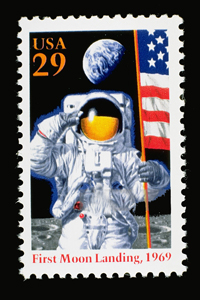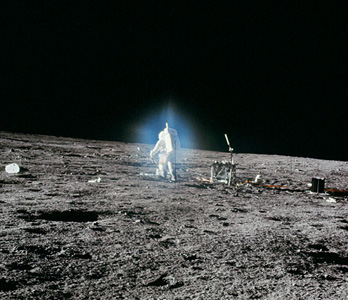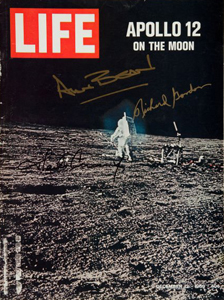 |
Thursday |
| What would you do with a 48-hour art residency on the moon? That was Greg Lundgren's GIANT STEPS challenge. Scores of Earthlings submitted, 53 proposals were accepted for a temporary exhibition that opened tonight at King Street Station. I'm happy to say mine was among them; I'm sad to say it didn't win the $10,000 grand prize. Here it is. 10, 9, 8... |
|||
| ENCAPSULATED
SKY What is the future of the moon? Will it be preserved as an international park for eco-tourism? Exploited for resources? Settled by colonists? If past is precedent, there will be a mix of uses. In this early phase of moon exploration and development, I choose to create a symbolic link to Earth using the moon's harsh environment as a foil to our home planet's bounteous but imperiled ability to sustain life as we know it. Anyone who has visited a fragile desert environment knows, there is beauty in barren places. As Apollo 11's Buzz Aldrin so memorably put it when setting foot on the moon in 1969: "Magnificent desolation." In my novel BUZZ, the moon plays a central metaphorical role. From the chapter "Black Skies in Daylight": The moon's gravity, 1/6th of Earth's, is not strong enough to wrap gasses around it. Because there is no atmosphere, objects do not recede into haze. For the first time in their lives the astronauts cursed their 20/20 test pilot eyes that allowed nothing to fade into the forgiving blur of distance. The stars did not twinkle or seem far away. A peculiar feeling of claustrophobia when the infinite is closing in, the heavens within arm's reach. Air is why earth's sky is blue. On the moon, the sky is black even in daytime. The only reminder of the sky they left behind was the emissions of their space suits, earthsky blue halos of what they exhaled. This little detail even found its way onto a US postage stamp: |
|||
|
|||
| I
would treat my moon residency as a visit to a
national park: "Take only pictures, leave only
footprints." Specifically, I would temporarily introduce a little bit of Earth sky blue to the otherwise stark black-and-white lunar landscape in the form of a clear inflatable six-foot sphere filled with an appropriate air mix. The gas inside will scatter sunlight, glow blue against the moon's black sky. The sphere could be inflated with captured space capsule waste gas or prepared canisters designed for that purpose--a bit of Earth's atmosphere to be rolled, bounced, and tossed along the lunar surface. Residency would be spent documenting the sphere by itself or as a prop manipulated by one or both astronauts. |
|||
 |
|||
| Apollo
14's Alan Shepard played golf on the moon. My
assistant and I would play catch or
soccer--perhaps the most universal of all
Earthling games. When time's up, the sphere will be deflated and returned to earth. In the digital age, art is dematerializing. Why sully the moon's surface with objects that few, if any, will ever see in person? The work is both whimsical and serious. Aesthetically, it recalls the pivotal early photographs taken from space, when concepts of "spaceship Earth" and the "big blue marble" first gained currency. Likewise, this little azure bubble highlights the fragility of Earth's atmosphere, the austere inhospitableness of the moon, and the giant steps humanity is taking to bridge the gap between the two. Gallery Exhibit Concept (where blue circle is tinted spotlight shining on wall display):  |


